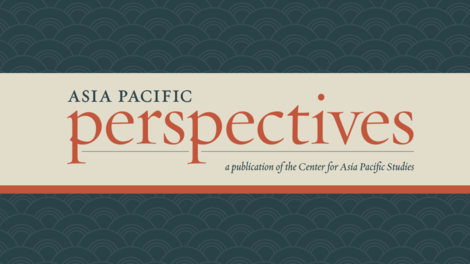
Editor's Introduction

We are pleased to announce the publication of the Fall 2017 issue of Asia Pacific Perspectives. This issue highlights the work of scholars who are researching masculinity in China, Japan, South Korea, and India in new and inventive ways.
The Fall 2017 issue features several papers from the University of San Francisco Center for Asia Pacific Studies’ fall 2016 conference, “Constructing Masculinities in Asia” for which participants were invited to consider how masculinity is defined and/or constructed in Asia and how these masculinities and/or expressions of manhood changed over time. The articles in this issue reveal that despite the plurality of definitions of masculinity across the Asia Pacific, one finds commonalities such as the importance of nation building, the corporate world, economic status and power, and the tension between native and Western traditions in shaping men’s identity.
This issue begins with Kam Louie’s think piece, “Asian Masculinity Studies in the West: from Minority Status to Soft Power.” Louie notes the rise of the study of Asian masculinities since the 1990s and traces the major transformations that ideas of Asian masculinity have undergone in academic discourse, social media and the film industry. As Louie notes, this is an exciting time in the study of Asian masculinity studies with scholars from a variety of fields addressing a diversity of topics.
In the first research article, Derek Hird explores how globalization and marketization has influenced constructions of masculinity in contemporary China and the Chinese diaspora and led some Chinese men to look to Confucianism and the ideal of the junzi for inspiration.
Romit Dasgupta’s study touches on the discourse of masculinity in Japan as embodied in the urban, middle-class white collar “salaryman” during the Showa (1925-1989) and Heisei (1989-present) periods. Dasgupta’s study argues for the continued relevance of the salaryman to understandings of masculinity in contemporary Japan.
Joanna Elfving-Hwang’s work continues to examine the importance of the salaryman in South Korea, but in the context of contemporary society where television dramas have become a medium for propagating ideas of masculinity. Elfving-Hwang’s study of “failed salarymen” in these dramas reveals how definitions of success, especially in the corporate world, can become intertwined with definitions of masculinity.
Madhura Lokohare’s paper provides insight on how masculinity is constructed in contemporary India. Studying how young subaltern men use billboards to “imagine and perform” their masculinity ideals, Lokohare reveals a dynamic landscape where politics, class, and consumption intersect and find public expression.
In this issue’s book review, Susan Brownell (University of Missouri-St. Louis) reads Stefan Heubner’s Pan-Asian Sports and the Emergence of Modern Asia, 1913-1947 (University of Singapore Press, 2016) and analyzes the book’s contribution to our understanding of the history of Asia through major sports events.
The papers featured in this issue are intended to encourage our readers to broaden their horizons beyond their usual region of interest or specialty. As we have found, reading about constructions of masculinity in other Asian societies yields important insights that contribute to discussions on topics such as the continued relevance of Confucianism in East Asian societies. We hope these articles will stimulate further discussion and research on the topic of Asian masculinity in its diversity of forms.
Thanks to Dr. Leslie Woodhouse for her dedication to the journal and all of her hard work on helping usher this issue to publication. We are excited to welcome our new editorial board to our team (please see title page for a complete list) and we look forward to collaborating with them on future issues of Asia Pacific Perspectives.
~ Melissa S. Dale, Editor
